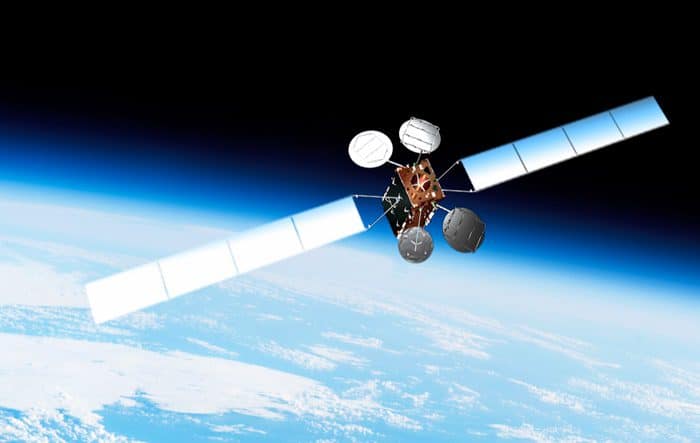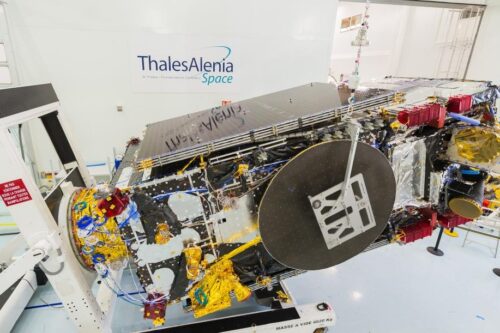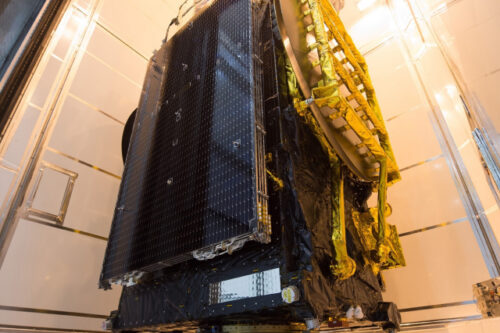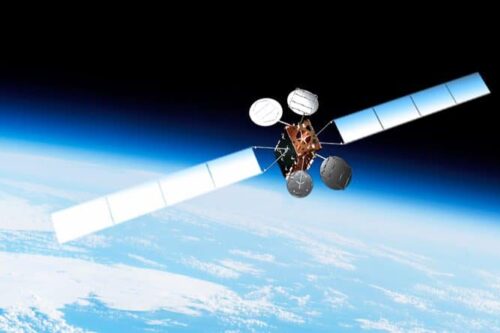
Back to selection
GEO Satellite
SGDC-1 GEO
succesfull
Launch date
5 May 2017
Country

Purpose
Military & Intelligence
Position
75° West
Manufacturer
Operator
Visiona Technologia Espacial S.A.
Launch operator
Launch vehicle
Ariane 5ECA
Expected lifetime
15+ Years

SGDC-1 – Brazil’s Geostationary Satellite for Defense and Strategic Communications at 75° West
The Geostationary Satellite for Defense and Strategic Communications (SGDC) is Brazil’s first military and civil geostationary communications satellite. Known in Portuguese as Satélite Geoestacionário de Defesa e Comunicações Estratégicas, SGDC was designed to enhance national sovereignty by delivering secure government communications and expanding broadband internet access across Brazil.
Overview and Technical Specifications
-
Operator: Telebrás and the Brazilian Ministry of Defense
-
Manufacturer: Thales Alenia Space (France)
-
Satellite Platform: Spacebus-4000
-
Orbital Position: 75° West (Geostationary Orbit)
-
Launch Date: May 4, 2017, at 21:52 UTC
-
Launch Vehicle: Ariane 5, operated by Arianespace
-
Launch Site: Guiana Space Centre, Kourou, French Guiana
-
Launch Mass: 5,800 kg (approx. 12,800 lbs)
-
Operational Lifespan: 18 years
-
Payload:
-
50 Ka-band transponders for broadband connectivity
-
5 X-band transponders for secure military communications
-
Mission and Purpose
SGDC was launched to address two critical national objectives:
-
Secure Defense Communications: It provides encrypted communication channels for the Brazilian Armed Forces and other government agencies, ensuring secure data transmission and national defense resilience.
-
Digital Inclusion: Through its powerful Ka-band transponders, SGDC helps bridge the digital divide by delivering high-speed broadband internet to remote and underserved regions across Brazil, including schools, hospitals, and public institutions.
Operator Background – Telebrás and Strategic Goals
Telebrás (Telecomunicações Brasileiras S.A.) is a Brazilian state-owned telecommunications company originally created in 1972. After being restructured in the early 2000s, Telebrás now plays a key role in national broadband expansion and government communications infrastructure.
SGDC is part of Brazil’s National Broadband Program (PNBL) and symbolizes a significant step in the country’s commitment to technological independence and cybersecurity. The partnership with Viasat supports the development of ground infrastructure and satellite internet delivery.
Launch and Deployment
The SGDC satellite was successfully launched aboard an Ariane 5 ECA rocket on May 4, 2017, alongside South Korea’s Koreasat-7. The mission was carried out by Arianespace, from the Guiana Space Centre in French Guiana. Following separation and orbit insertion, SGDC began its journey to its designated geostationary slot at 75° West.
Future Developments – SGDC-2
A second satellite, SGDC-2, was originally scheduled for launch no earlier than 2022 to complement and expand the capacity of the first SGDC. However, as of July 2021, the project has been delayed indefinitely due to budgetary concerns and legal challenges surrounding the procurement process.
Conclusion
The SGDC satellite marks a strategic milestone in Brazil’s ambition to control its own secure communications infrastructure and to bring internet access to all citizens, regardless of geography. With SGDC, Brazil joins the ranks of nations operating dual-use satellites for defense and public service, reinforcing its digital sovereignty and national development.
GEO Satellite
SGDC-1
succesfull
GEO Satellite
SGDC-1
succesfull
GEO Satellite
SGDC-1
succesfull


